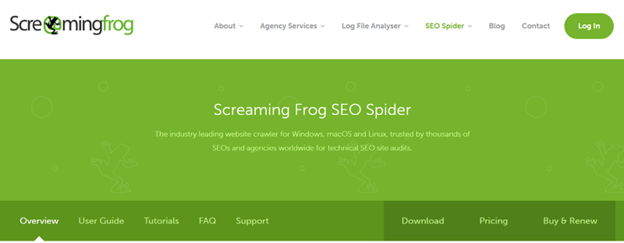
Apartment SEO is the process of optimizing a real estate website, particularly for apartments, to rank higher in search engine results. You want residents to be able to find you online and this makes sure they can. It involves tailoring your content, keywords, and website design to meet the specific needs of apartment seekers.
SEO in real estate has evolved with digital marketing trends, shifting from a basic website presence to sophisticated strategies that include local SEO, mobile optimization, and content marketing. You don’t want your property to be left behind.
53% of traffic to multifamily websites comes from organic search. In the highly competitive real estate market, effective SEO strategies enable property managers and agents to stand out, attract potential tenants, and fill vacancies more quickly. SEO also plays a pivotal role in building brand visibility and credibility online. Combining SEO, PPC, and social media can help your property gain online visibility and attract more tenant leads. Staying updated with real estate digital marketing trends is key for adapting strategies to current market demands.
If you’re a property manager or real estate agent, you will be familiar with apartment marketing. It’s a crucial strategy to promote a property, generate more leads, and quickly fill vacancies.
Avoiding common SEO mistakes prevents wasted time and resources, ensuring your efforts yield optimal results. In this blog post, we’ll go over eleven of the most common SEO mistakes to avoid when marketing your multifamily property.
Learn From Past SEO Errors and Avoid Failure
SEO is a critical component of digital marketing. It involves optimizing a website’s content and technical structure to improve its visibility and ranking on search engine results pages. But, even with the best intentions and efforts, mistakes and failures in SEO can happen, leading to a negative impact on a website’s performance in search results.
One of the most common SEO mistakes is keyword stuffing, which involves overusing keywords on a website’s pages or meta tags to manipulate search engine rankings. Other mistakes include neglecting on-page optimization, ignoring user experience, neglecting mobile optimization, and buying links. These mistakes can lead to penalties from search engines, lower search engine rankings, and ultimately, a decrease in organic traffic to a website.
Avoiding the Most Common SEO Mistakes
As stated above, SEO errors can greatly affect a website’s overall performance. It’s a common mistake to not make content a priority, which often leads to content that lacks quality and relevance. Websites with interactive content see an average increase in user engagement time by up to 70%. If you don’t recognize the importance of internal links, it can really affect the website’s navigation and the user experience overall.
To avoid these and other common SEO errors, it’s important to focus on creating high-quality content and optimizing it with relevant keywords and internal links. Take a look below to learn how to avoid these 9 common SEO mistakes and once you’ve implemented them, regularly monitor your website’s performance to identify any areas for improvement.
1. Content is Not Meeting User’s Intent
Content is essential for SEO success. With the right strategies, quality content will increase your search rankings and drive more organic traffic to your website.
Your website content is all about creating unique content that adds real value and meets the user’s intent. It should be tailored to the needs of your audience. Think about what they want to know and what they are searching for. This content needs to be relevant, informative, and helpful. Create content that your audience actually wants to read. Make it engaging so that they will want to take action.
If your content is boring, repetitive, or doesn’t offer any value to readers, then it won’t be successful. Implementing user engagement strategies for property websites can significantly increase interaction and time spent on the site. Make sure your content is interesting and offers your users something new. Effectively transform negative reviews into constructive feedback, enhancing your content’s relevance and engagement, which is key for SEO success.
When it comes to SEO, content should include the right keywords, have optimized titles and meta descriptions, and link to other relevant content on your website (more on these later). Quality content should be coupled with an effective SEO strategy to maximize its reach and impact on search rankings. Innovative multifamily branding strategies can significantly elevate your property’s online presence, attracting a broader and more engaged audience.
By implementing the right strategies, you can use content marketing to improve your SEO efforts and get more organic search traffic to your website. Quality content will help you increase your visibility in the search engines and achieve all your SEO goals.
2. Slow Website
Page speed is an important factor when it comes to website design and optimization. Since Google uses page loading speed as a factor to rank websites, having a fast-loading website gives you better visibility on search engines. In contrast, slow-loading pages can lead to a poor user experience, resulting in higher bounce rates.
You may spend a lot of time optimizing your content for search engines, but if your website visitors leave as soon as they arrive because of a slow loading page, the quality of your content won’t make a difference. Fortunately, there are a few ways to improve page loading speed and make sure that your website runs as smoothly as possible.
There are various ways to speed up your real estate apartment website. Some best practices include choosing a reliable hosting provider, using a content delivery network (CDN), resizing your images, and minifying your code. Check the tutorial here to find comprehensive steps for improving your WordPress site speed.
Optimizing your images is a great place to start. To maximize your property’s online appeal, design your website with marketing in mind, ensuring it aligns with your audience’s needs and preferences.
Images play an important role in the design of your website and in showing off your brand, but if they’re not optimized for the web, they can dramatically slow down page loading times. By using tools like Adobe Photoshop or GIMP, you can easily reduce the size of your images without sacrificing quality, allowing your website to run faster.
A content delivery network (CDN) is a network of servers that are located around the world. When someone visits your website, the CDN provides the content from the server that is closest to them, speeding up content delivery. This is especially useful if your website receives a lot of visitors from different locations.
Streamlining your code is another way to improve your page loading time. Your website’s code should be well written and optimized for the web because it has a huge impact on page loading speed. You can check your code for any errors and make sure that it is compliant with web standards by using tools like HTML validators. This improves your website’s overall performance and helps your pages load quickly.
Caching lets your website store static content, like images, in the browser’s memory. This makes it possible for your website to quickly access and serve up this content when a visitor lands on a page, significantly reducing page loading times. It’s a great way to make sure people who visit your site have a positive experience and find the information they were looking for quickly.
Using these strategies will improve page loading speed and make sure that your website runs smoothly. With intelligent optimization and a little bit of effort, you can make sure that your website runs quickly and efficiently. This benefits both users (your potential customers) and your search engine ranking.
To check your website loading speed, use Google’s PageSpeed Insights. It will help analyze and score your website performance, enabling you to find and fix issues accordingly.
3. Technical SEO Oversights
Understanding and leveraging advanced SEO techniques can significantly enhance your online presence. Let’s delve into three often-overlooked aspects: schema markup, canonical tags, and advanced internal linking strategies.
Schema Markup
Schema markup, a form of microdata, when added to your website, creates an enhanced description (commonly known as a rich snippet) that appears in search results. For apartment marketing, this is a game-changer. Imagine a search result that not only lists your website but also showcases ratings, pricing, and availability, all at a glance. This enriched information can significantly boost click-through rates. To implement schema markup, you can use tools like Google’s Structured Data Markup Helper. Implementing structured data can increase the chances of having rich snippets in search results, which can boost CTR by up to 30%.
Canonical Tags
Duplicate content is a common challenge. Here’s where canonical tags come into play. These HTML elements tell search engines which version of a page is the main copy, or the ‘canonical’ version. This is crucial for apartment websites that list similar content across multiple pages. By using canonical tags, you ensure that search engines index your pages correctly, attributing the right value to each page. It’s like telling a story where each chapter is distinct yet part of a larger narrative.
Internal Linking
Internal linking is about building a strategic roadmap within your site. For multifamily websites, this means creating links that guide potential tenants through a journey, from initial discovery to final decision-making. This strategy involves linking from high-authority pages to newer or less visible ones, distributing page authority throughout the site. It’s akin to a guided tour, where each link is a hand-held invitation to explore further.
4. Neglecting Social Media Presence
Although most real estate businesses have an Instagram or a Twitter account, many don’t update their posts regularly. This makes the business look irrelevant or untrustworthy, harming its reputation.
Building a strong social media presence will bring many advantages, such as reaching more audiences, increasing web traffic and online visibility in search rankings, and improving resident retention. For example, you can host a virtual tour of your apartment to attract and engage with potential residents.
If you want to manage all your social media accounts on one platform, use a social media tool like Sprout Social or Hootsuite. It can help you schedule posts, monitor engagement, and generate reports from multiple accounts.

5. Not Including Relevant Keywords
Keywords are certain words or phrases people use when looking for information in a search engine. It’s a crucial part of any SEO strategy since the more relevant your keywords are, the more likely your web page will appear in search results. Focusing on keywords is a great way to get higher search engine rankings and achieve greater visibility.
Relevant keywords describe the content, products, or services you offer. They help search engines understand what your business is about so they can show your site in relevant searches. For an apartment website, you might include keywords about the floor plans, amenities, attractions in the surrounding neighborhood, and most importantly, the city you’re located in.
When someone searches for the keywords associated with your business, you want to make sure that your website appears in the results so that potential customers can find you. To do that, you’ll need to include the most relevant keywords that potential tenants might search for, like apartments in a specific city and state.
Intentional use of keywords will help your ranking on Google and other platforms. Using the most commonly searched relevant keywords increases the chances that people looking for what you offer will find you in search results. This can improve your visibility and lead to more customers visiting your website and even more sales.
By using relevant keywords, you can more easily reach your target audience. You’ll reach a larger and more specific online audience. This way, you can reach the customers who are looking to actually connect with you and take action.
Before incorporating this strategy, you’ll need to conduct keyword research. Doing so will help you find the best search terms based on your target audience. Google Keyword Planner and Semrush are popular SEO tools that can offer keyword suggestions and help you find high-search volume keywords.
Contrary to popular belief, focusing on long-tail keywords can be more effective than targeting highly competitive broad keywords. Long-tail keywords are often more specific and align better with the user’s intent, leading to higher conversion rates.

6. Ignoring Click-Through Rates
A click-through rate (CTR) is the percentage of people who click on your website link or ads to visit your site. A high CTR will help you gain more online visibility, increasing site traffic. However, many businesses tend to overlook this crucial metric.
To improve your site’s CTR, consider implementing these tips:
- Write a compelling copy – ensure that your meta titles and descriptions are concise and include a call to action. You can also use emojis or statistics to grab visitors’ attention.
- Use descriptive URLs – make sure that your web page URLs are not a string of random characters. Descriptive links help visitors and search engine crawl bots easily understand different web pages.
- Add long-tail keywords – using long-tail keywords in snippet elements will help you improve the website’s relevance based on users’ search intent. They’re also easier to rank and can boost traffic.
- Implement schema markup – you can provide more information by adding structured data to capture rich snippets on search engines. These snippets display additional information, such as dates, times, and ratings.
7. Failing to Optimize Title Tags and Meta Descriptions
Another common SEO mistake is not optimizing title tags and meta descriptions that help search engines understand what your content is about. These are the elements that appear when your page is displayed in search results. Therefore, optimized title tags and meta descriptions can increase your search visibility and CTR.
In today’s digital world, optimizing title tags and meta descriptions are essential to creating successful search engine marketing campaigns. Title tags and meta descriptions act as the foundation of a website’s content, providing structure and context to both search engine crawlers and website visitors.
Meta tags are HTML elements that display the title of a web page in the search engine listings. They act as concise summaries of a page’s content and should be optimized with the best SEO practices in mind. Title tags should include the main keywords for the page, but should also be descriptive and engaging. Keep the title tag between 50-60 characters for optimal display.
Make Sure Your Meta Tags are SEO-Friendly
Meta descriptions provide a summary of a page’s content. They are displayed in SERPs below the page title and should be optimized to include keywords that are relevant to the content. Meta descriptions should be no more than 155 characters and should be written in an engaging and interesting way in order to increase click-through rate.
When optimizing title tags and meta descriptions, it is important to make them unique for each page of your website. Search engines often penalize sites with duplicate or generic content. Plus, a lack of unique content can confuse visitors and decrease the overall user experience.
When optimizing your title tag, we recommend adding keywords and using straightforward language. Remember to place the keyword naturally in the title or heading and avoid keyword stuffing.
To check the results of your optimization strategy, track the website’s traffic and performance through Google Search Console. Here, you can identify the highest-performing web pages.
8. Many Broken External or Internal Links
Updating and auditing web content regularly is crucial. Without doing it, you might risk your site having many broken links. That means any link that directs to a web page that has been removed or no longer exists. Such links can harm your site by making it look like a non-credible source.
When it comes to SEO, broken links can have a huge impact on your website’s performance. Broken links can create a number of issues, including negative user experience, poor search engine indexing, and a decrease in overall ranking. All of these issues can be damaging to your website’s visibility and organic traffic.
But don’t worry – there are a few steps you can take to identify, track, and fix any broken links that are on your website in order to optimize your SEO.
First, you need to identify any broken links. You can manually check all the links on your website, use website crawlers, or a link-checking tool. Once you’ve identified the broken link, you’ll want to take action to fix it.
The best way to fix a broken link is to replace it with a working link. If this isn’t possible, you’ll need to remove the link entirely and update the anchor text.
Removing broken links from your website is also important for SEO purposes. Google’s algorithm can penalize websites with broken links, so it’s important to identify and fix them as soon as possible in order to maintain a healthy search engine ranking.
Outdated links negatively affect the user experience and bounce rate, which doesn’t help your SEO ranking. To help you maintain customer trust, various tools like Sitechecker and Screaming Frog can scan for broken links on your website.
Along with checking and fixing links, I’ve come to realize the importance of regular content audits. Many sites often overlook outdated content, which can mislead or disengage users. On top of that, it can make anything that links to it seem like it’s outdated or a bad fit. Conducting bi-annual content reviews to update property information, neighborhood data, and market trends keeps your site relevant and authoritative. This is crucial, as up-to-date content is more likely to be shared and linked to.

9. Not Using Directory Listing
A directory listing is an online profile that contains your business details, such as the address, company name, contact information, and operational hours. It can help enhance local SEO, enabling the target audience within the area to find your business quickly.
For example, use Google My Business to improve your SEO by adding photos, reviews, and ratings. It will help potential residents know more about your apartment listings, from the location to the square footing.
Remember to regularly update your listings and property viewing schedules, and add a link to your apartment website. This will encourage visitors to engage with your business.
10. Not Mobile-Friendly
With mobile-first indexing, Google uses the mobile version of web content to rank websites to create a better user experience for mobile visitors. That’s why creating a mobile-friendly site is vital for SEO.
To ensure that your website and its content are responsive on mobile devices, we recommend removing pop-ups, using a responsive layout, compressing images, and adding a Back to Top button. Then, conduct a mobile-friendly test on Google by entering your web page URL to check the site’s responsiveness.
11. Web accessibility and SEO
Web accessibility may not directly influence rankings, but improving web accessibility can indirectly boost your website’s SEO. How? By ensuring ADA compliance, you’re streamlining your website for ease of navigation and clarity, which in turn aids search engines in efficiently crawling and indexing your site.
Imagine entering a well-organized, easily navigable apartment, where everything is within reach and clearly marked. That’s the kind of user experience you want to replicate on your website. By focusing on accessibility, you’re catering to a wider audience, including those with disabilities. This approach not only improves user experience but also reflects positively on your brand’s commitment to inclusivity.
Moreover, search engines, much like attentive visitors, favor websites that are clear, structured, and easy to navigate. Elements like alt text for images, clear headings, and accessible design not only make your site more user-friendly but also more ‘crawler-friendly’. This means better indexation and, potentially, better rankings. Furthermore, ADA compliance can indirectly influence your website’s SEO performance.
Conclusion
Implementing apartment SEO strategies will help property managers and apartment marketers advertise their listings online. It also enables potential tenants to discover your services quickly on Google.
To build a successful strategy, you’ll need to understand how SEO works and avoid these ten common SEO mistakes:
- Not prioritizing content.
- Slow loading site.
- Ignoring Technical SEO
- Poor social media presence.
- Not using relevant keywords.
- Not paying attention to CTR.
- Unoptimized title tags.
- Not removing broken links.
- Not leveraging directory listings.
- Unresponsive website.
For effective apartment advertising, avoiding common SEO errors is crucial. A website’s visibility to potential tenants and search engine ranking can both be greatly improved by optimizing the website’s SEO. But many webmasters frequently make errors with meta tags, keyword stuffing, and disregarding website structure, which may negatively impact a website’s SEO, which is why it’s crucial to hire a professional to perform a thorough site audit in order to find and fix any problems.
Apartment marketers can boost their website’s search engine ranking, draw more traffic, and ultimately increase their occupancy rates by avoiding these common SEO errors.
We hope this article has helped you improve your apartment marketing strategy to drive more site traffic and sales. Good luck!
Categorised in: Apartment Marketing
This post was written by Chandra Lloyd
Chandra Lloyd is a writer for Market Apts with a focus on SEO copywriting and digital marketing for multifamily housing.





